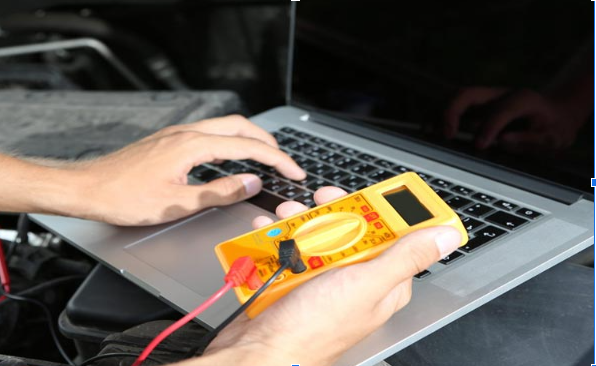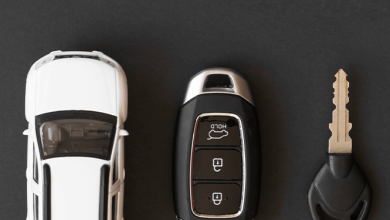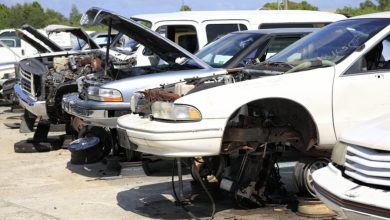Unveiling the Secrets of Auto Electrical Repairing: A Comprehensive Overview

In the world of modern transportation, automobiles have become an integral part of our daily lives. They have evolved significantly over the years, incorporating sophisticated electrical systems that control various aspects of the vehicle’s performance, safety, and convenience. Auto electrical systems are responsible for powering everything from the engine to the headlights, from the entertainment system to the navigation technology. However, when these systems malfunction, it can lead to frustration and inconvenience. This is where the art of auto electrical repairing comes into play, helping us unveil the secrets behind these intricate systems. In this comprehensive overview, we will delve into the intricacies of auto electrical repairing, shedding light on the essential components, common issues, and the skills required to master this craft.
The Basics of Auto Electrical Systems
Auto electrical systems are the heart and soul of modern vehicles. They serve multiple purposes, including:
Power Generation: The engine produces mechanical energy that is converted into electrical energy by an alternator. This electrical energy is used to charge the battery and power the vehicle’s electrical systems.
Starting the Engine: The starter motor uses electricity from the battery to turn the engine over, initiating the combustion process.
Lighting: Auto electrical systems are responsible for illuminating the headlights, taillights, interior lights, and all other lighting components.
Climate Control: Heating and air conditioning systems are operated by electrical components, ensuring passenger comfort.
Entertainment and Communication: Radios, GPS, and other entertainment and communication devices rely on the electrical system to function.
Safety: Safety systems such as airbags and ABS (Anti-lock Braking System) depend on electrical sensors and controls to provide protection during accidents.
Key Components of Auto Electrical Systems
Understanding the critical components of an auto electrical system is the first step in unraveling its secrets. These components work together to ensure the vehicle’s smooth operation:
Battery: The battery is the heart of the electrical system, storing electrical energy to start the engine and power various electrical components. It is essential to keep the battery in good condition.
Alternator: The alternator is responsible for charging the battery and providing electrical power to the vehicle while the engine is running.
Starter Motor: This component turns the engine over, initiating the combustion process. It requires a burst of electricity from the battery to function.
Wiring and Cables: Wires and cables connect various electrical components in the vehicle, ensuring the flow of electricity.
Fuses and Relays: Fuses and relays protect the electrical system by preventing overloads and short circuits. Fuses blow out when there’s too much current, while relays act as switches that control electrical circuits.
Sensors: Modern vehicles are equipped with various sensors that monitor conditions like engine temperature, oxygen levels, and wheel speed. These sensors send data to the vehicle’s computer, which makes real-time adjustments.
Control Modules: These modules, such as the Engine Control Module (ECM), Transmission Control Module (TCM), and more, manage the vehicle’s operations by processing data from sensors and making adjustments accordingly.
Lights and Bulbs: Lighting components include headlights, taillights, brake lights, and interior lights. These are essential for visibility and safety.
Common Auto Electrical Issues
Auto electrical systems are highly reliable, but they are not without their share of problems. Understanding these common issues is essential for any auto electrical repair technician:
Dead Battery: One of the most common problems is a dead battery, which can result from leaving lights on, a malfunctioning alternator, or simply the end of a battery’s life cycle.
Faulty Alternator: A failing alternator can lead to an undercharged battery, resulting in dimming lights and poor performance. A defective alternator needs to be repaired or replaced.
Starter Motor Issues: If the starter motor fails, the engine won’t turn over. This issue often manifests as a clicking sound when you turn the key.
Blown Fuses: Fuses protect the electrical system by breaking when there’s too much current. Blown fuses can cause specific electrical components to stop working.
Wiring Problems: Damaged or corroded wiring can disrupt the flow of electricity, leading to various electrical malfunctions.
Sensor Failures: Faulty sensors can result in inaccurate data being sent to the control modules, causing issues with engine performance and emissions.
Dimming Headlights: Dim or flickering headlights can indicate problems with the alternator, wiring, or the bulbs themselves.
Electrical Shorts: Short circuits can lead to various issues, from blown fuses to complete system failures.
Mastering the Art of Auto Electrical Repairing
Auto electrical repairing is both a science and an art. To unveil the secrets of this field, individuals must develop a range of skills and knowledge:
Diagnostic Skills: The ability to diagnose electrical problems accurately is crucial. Technicians must be skilled in using diagnostic tools and reading error codes from the vehicle’s computer.
Electrical Knowledge: Understanding the fundamentals of electrical circuits, Ohm’s law, and voltage drop testing is essential for troubleshooting and repair.
Safety Awareness: Working with auto electrical systems can be dangerous if safety precautions are not followed. Technicians must be well-versed in safety protocols and the proper handling of electrical components.
Problem-Solving Skills: Every electrical issue is a puzzle that needs solving. A good technician must have strong problem-solving abilities to identify and fix the root cause of problems.
Up-to-Date Training: As automotive technology evolves, so does the complexity of auto electrical systems. Technicians must undergo regular training to stay current with the latest advancements in the field.
Patience and Attention to Detail: Finding and repairing electrical issues can be time-consuming and require a high level of precision and patience.
Quality Tools and Equipment: Having access to the right tools and equipment is crucial for effective troubleshooting and repair.
Customer Service Skills: Interacting with vehicle owners and explaining complex electrical issues in a clear and friendly manner is essential for customer satisfaction.
The Importance of Professional Auto Electrical Repair
While many vehicle owners may attempt to address minor electrical issues themselves, professional auto electrical repair is often the safest and most reliable option. Skilled technicians can quickly diagnose and repair problems, preventing further damage and ensuring the vehicle’s continued safe operation. Moreover, professional repair can save time and money by avoiding costly mistakes that can result from DIY attempts.
Professional auto electrical repair also plays a vital role in vehicle safety. Faulty electrical systems can compromise safety features, such as airbags and ABS, putting the driver and passengers at risk. A well-maintained electrical system ensures that these safety features function as intended, potentially saving lives in critical situations.
Additionally, professional auto electrical repair helps maintain the vehicle’s resale value. A well-documented service history, including electrical repairs, can enhance the market value of a vehicle and make it more attractive to potential buyers.
Conclusion
In the world of modern automobiles, auto electrical and mechanical systems are the intricate web of components that power and control our vehicles. Unveiling the secrets of auto electrical and mechanical repairing involves understanding the basics of these systems, recognizing common issues, and mastering the skills required to diagnose and repair them. With this knowledge, professional technicians can keep vehicles running smoothly and safely, providing peace of mind to drivers around the world. Whether it’s a dead battery, a malfunctioning alternator, or a more complex electrical or mechanical problem, the art of auto-electrical and auto mechanical repair is the key to ensuring our vehicles continue to serve us reliably and efficiently.



